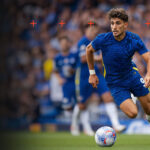The NFL Draft is a spectacle of speculation, fueled by projections, hype, and historic bias. First-round picks dominate headlines, while potential stars slip through the cracks. But what if we could cut through the noise? What if we could evaluate prospects using a more objective lens?
At Kitman Labs, we applied AI to do just that—analyzing historical data to uncover the traits most strongly linked to long-term success in the NFL. Our model leverages college performance metrics, NFL Combine results, and physical characteristics to predict which players have the best chance of thriving at the professional level. This year, we focused on quarterbacks, running backs, and wide receivers.
The Science Behind the Model
Our AI model doesn’t attempt to predict with certainty who will become a star—that’s still a nearly impossible task. Instead, it identifies which prospects demonstrate traits associated with sustained NFL success. A “successful” player, in our model, is one who contributes meaningfully at the NFL level over multiple seasons.
Notably, even the most promising players score just above a 50% success probability, because success in the NFL is rare. Historically, teams only get it right 19–27% of the time across these positions, with first-rounders reaching success just 56–69% of the time. Our model reflects that reality, offering a grounded perspective rather than inflated expectations.
A striking example? In 2022, the model identified Brock Purdy—the final pick of the draft—as the quarterback with the highest probability of NFL success (51%). While penalized for his smaller frame, Purdy’s exceptional college production, rushing capability, and passing efficiency set him apart. Fast forward to today, and the model looks prescient.
2025 NFL Draft: AI’s Most Compelling Picks
Let’s take a closer look at this year’s draft class—who stands out, who’s undervalued, and which players might just become the next Brock Purdy.
Running Backs
Cam Skattebo, Arizona State
Draft Projection: 3rd Round | AI Success Prediction: 60%
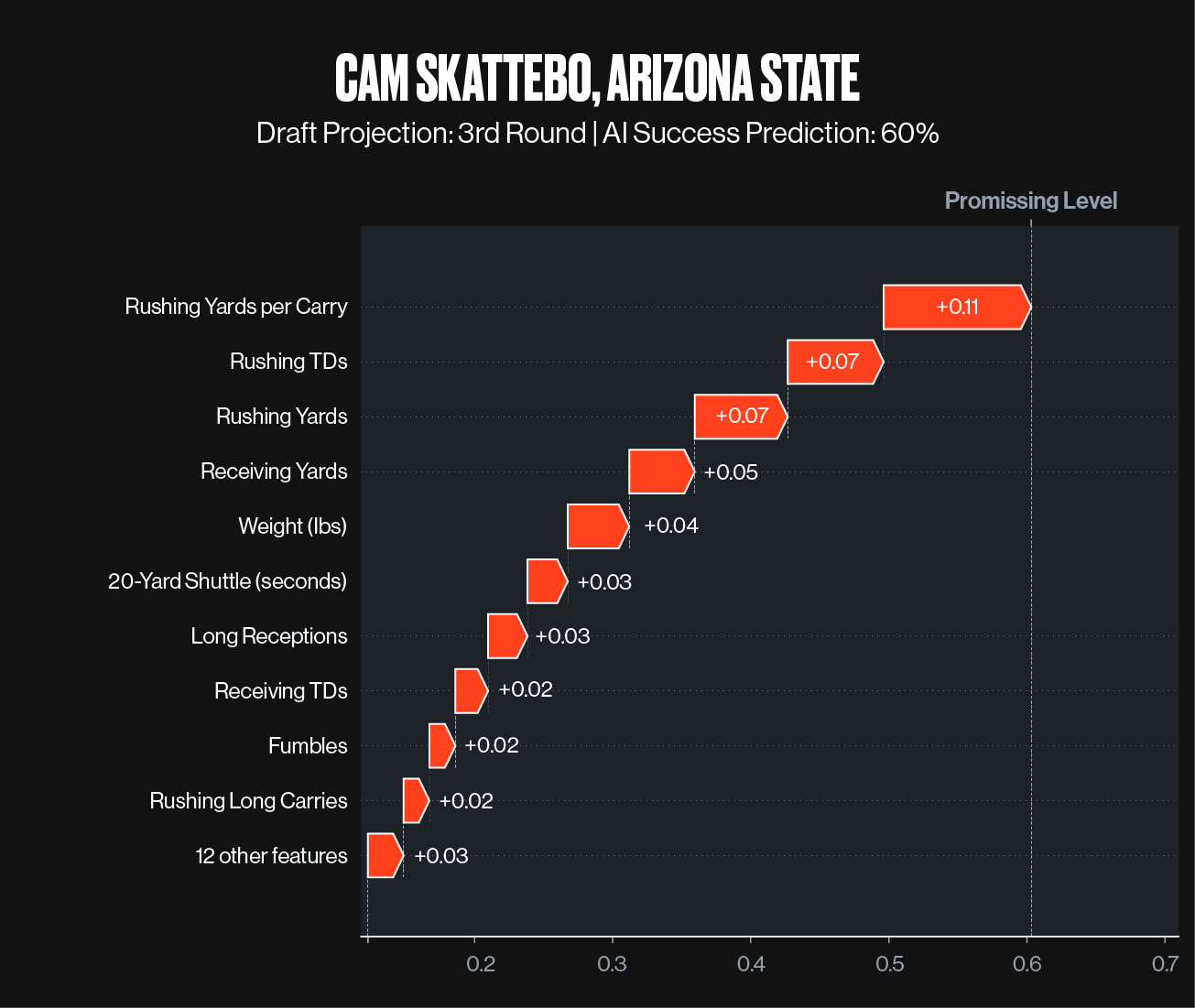
Skattebo leads all running backs in our model with a 60% chance of success. That’s triple the average for his draft range. His dual-threat production—averaging 416 receiving yards per season—and 219-pound frame make him a high-upside value pick.
Ashton Jeanty, Boise State
Draft Projection: 1st Round (6th Overall) | AI Success Prediction: 59%
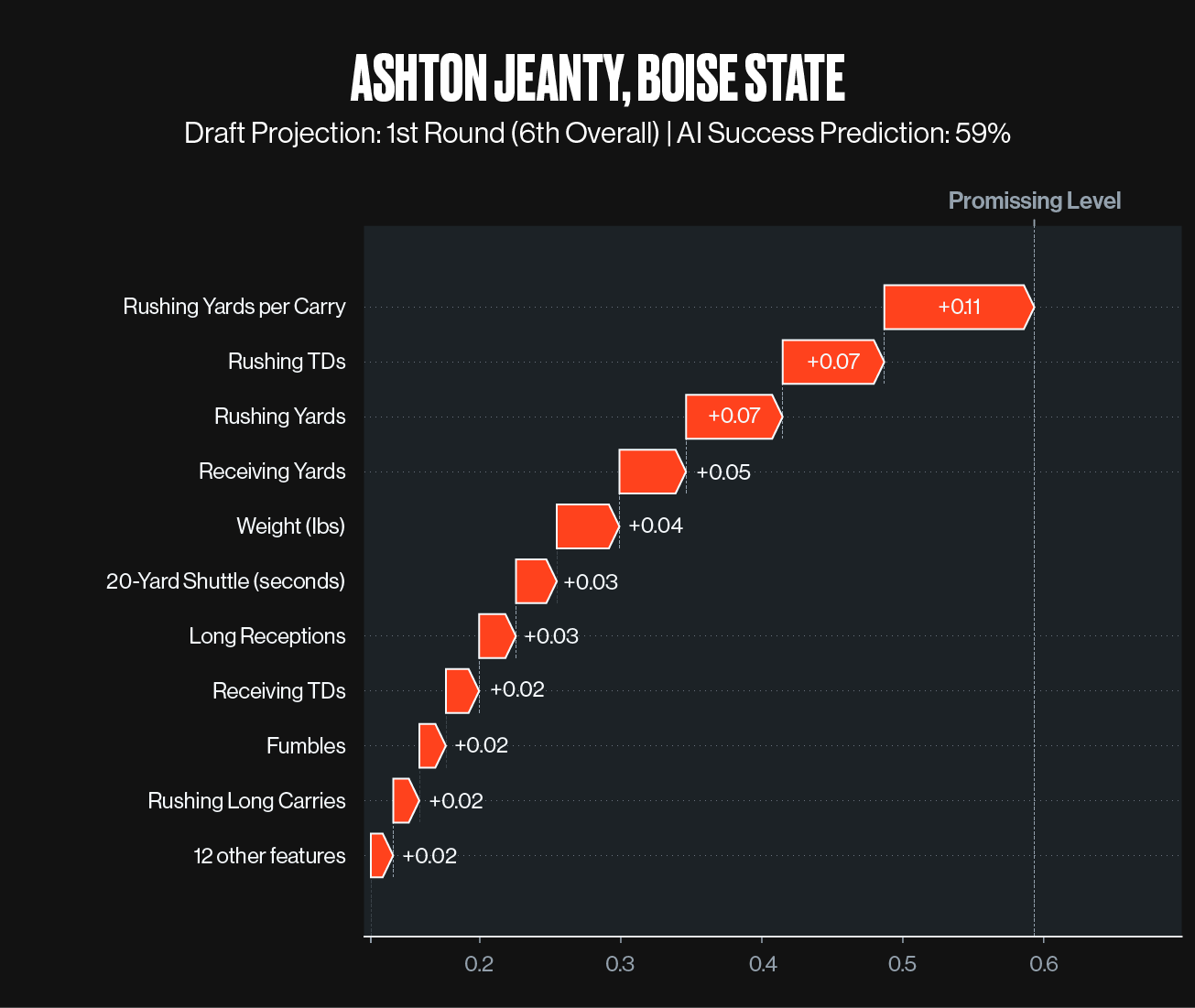
The top-ranked RB in traditional mock drafts also fares well in our model. Jeanty boasts elite production, including 16 rushing touchdowns per season and a solid 211-pound build. Not a sleeper, but certainly validated.
TreVeyon Henderson, Ohio State
Draft Projection: 2nd Round | AI Success Prediction: 32%
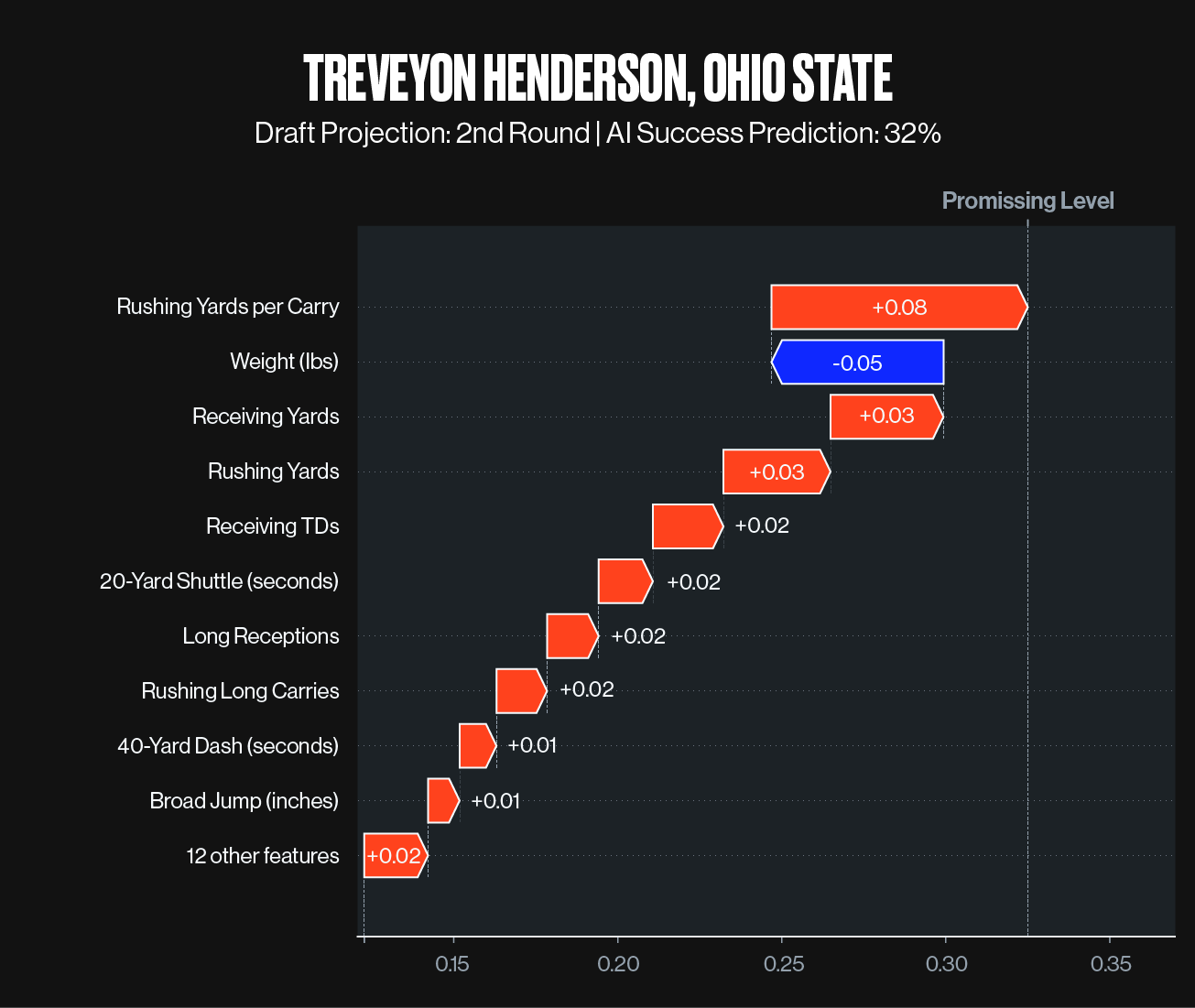
Despite explosive stats—like 6.28 yards per carry—Henderson’s lighter build (202 lbs) lowers his projection. Still, his athleticism and playmaking offer upside beyond what the model alone can capture.
Quarterbacks
Dillon Gabriel, Oregon
Draft Projection: 5th Round | AI Success Prediction: 54%
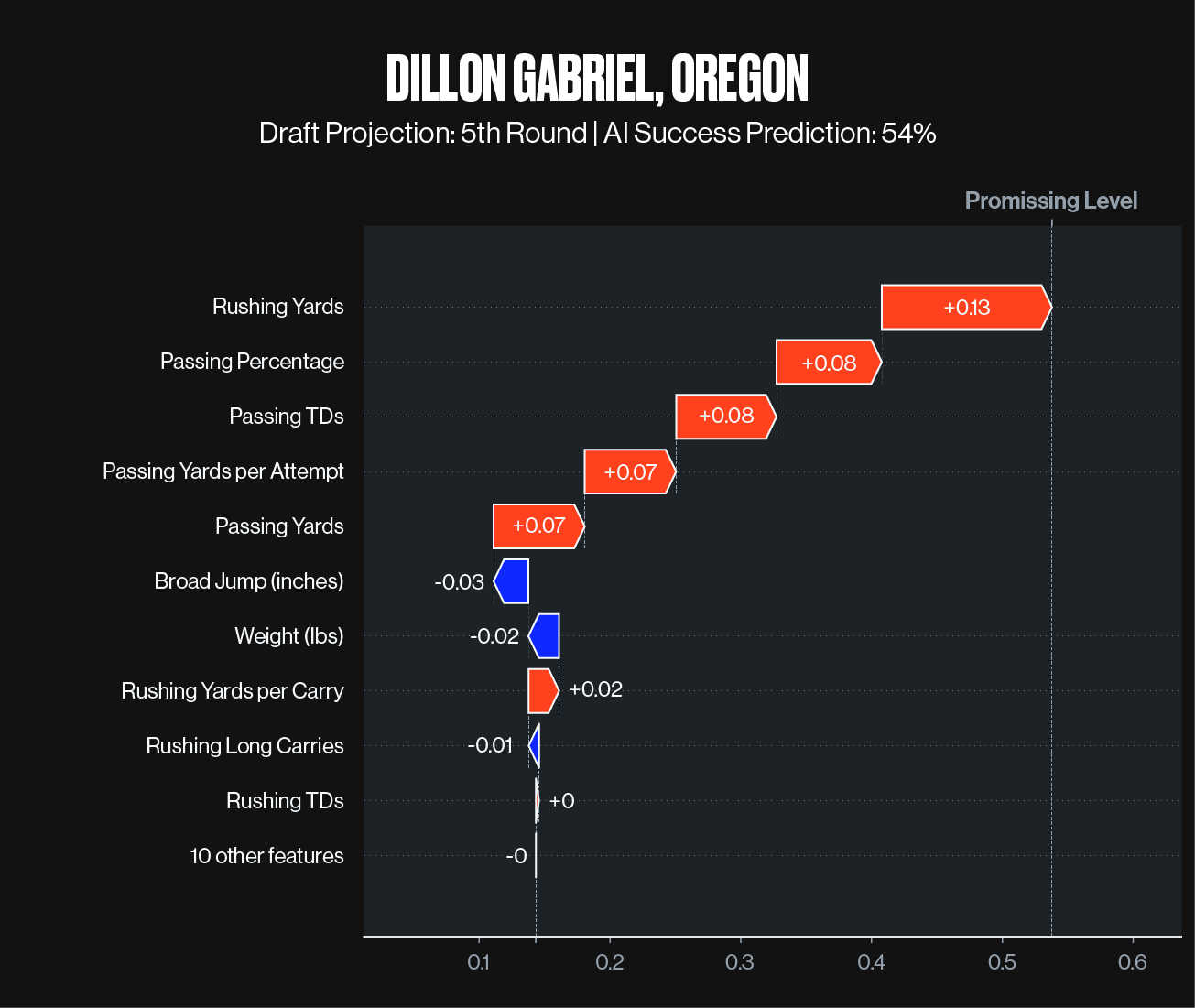
An eyebrow-raiser: Gabriel earns the highest success prediction of any QB in this class. Historically, 5th-round QBs have fared poorly, but Gabriel’s passing efficiency (65.4% completion, 8.77 YPA) and rushing ability make him a strong outlier.
Jaxson Dart, Ole Miss
Draft Projection: 1st Round | AI Success Prediction: 48%
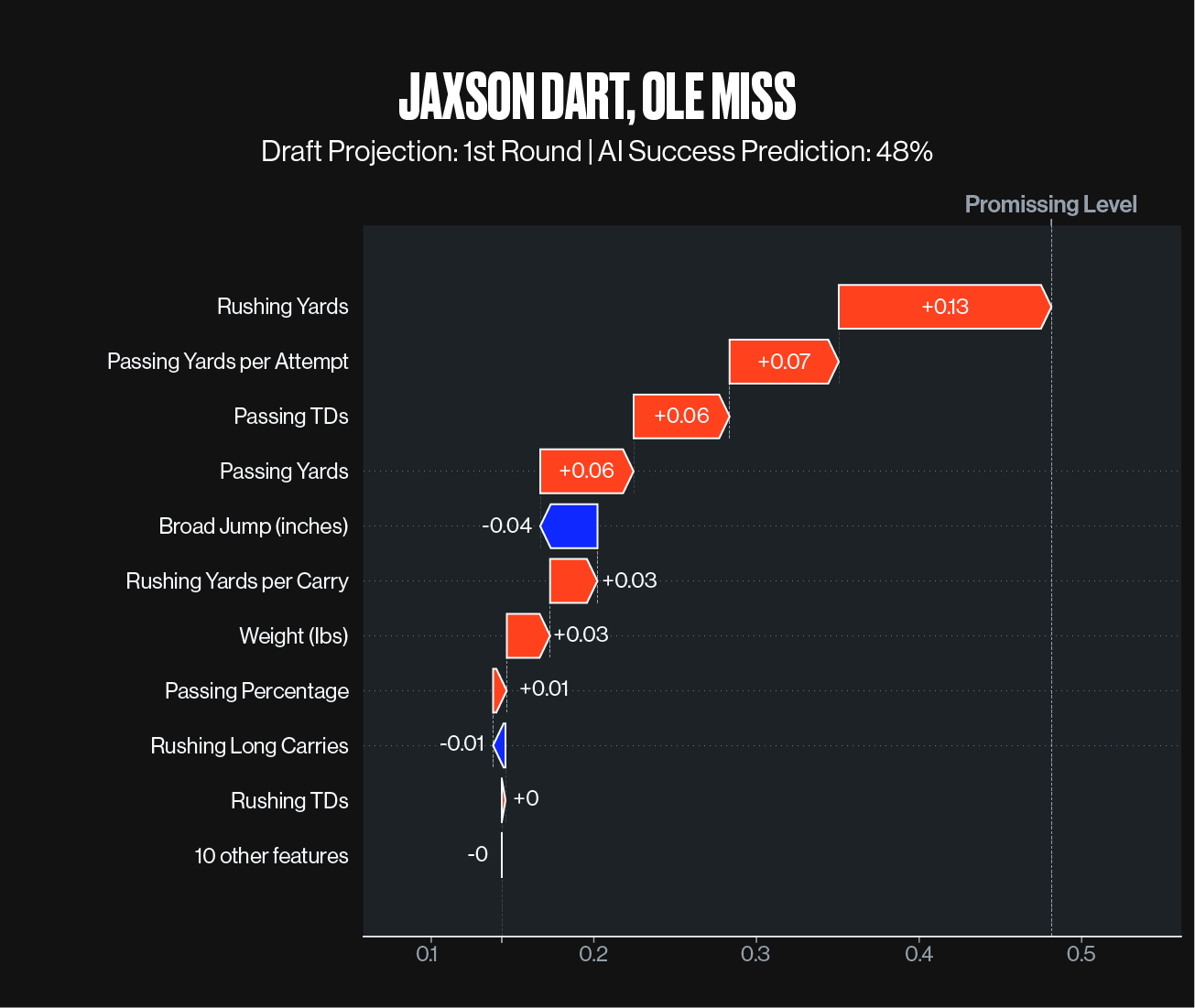
The youngest QB in the class offers strong dual-threat upside—averaging 385 rushing yards per season—with solid passing stats to match. The model dings him for missing Combine data but still rates him highly.
Seth Henigan, Memphis
Draft Projection: Undrafted | AI Success Prediction: 51%
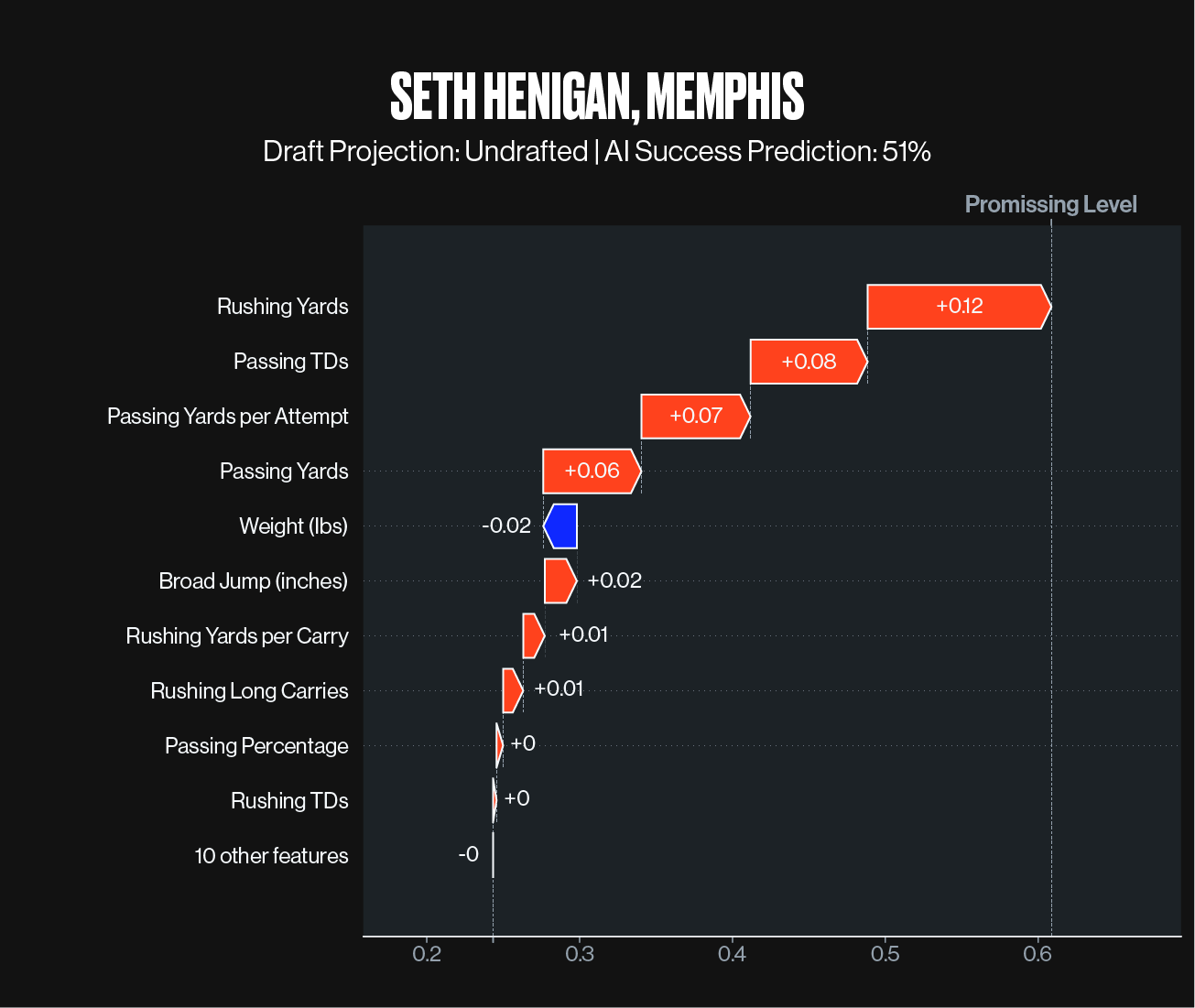
Henigan may be this year’s hidden gem. A four-year starter with impressive passing and rushing production, he matches Brock Purdy’s 2022 projection. With traits the model values and a strong statistical profile, he’s a high-upside UDFA candidate.
Wide Receivers
Jayden Higgins, Iowa State
Draft Projection: 2nd Round | AI Success Prediction: 56%
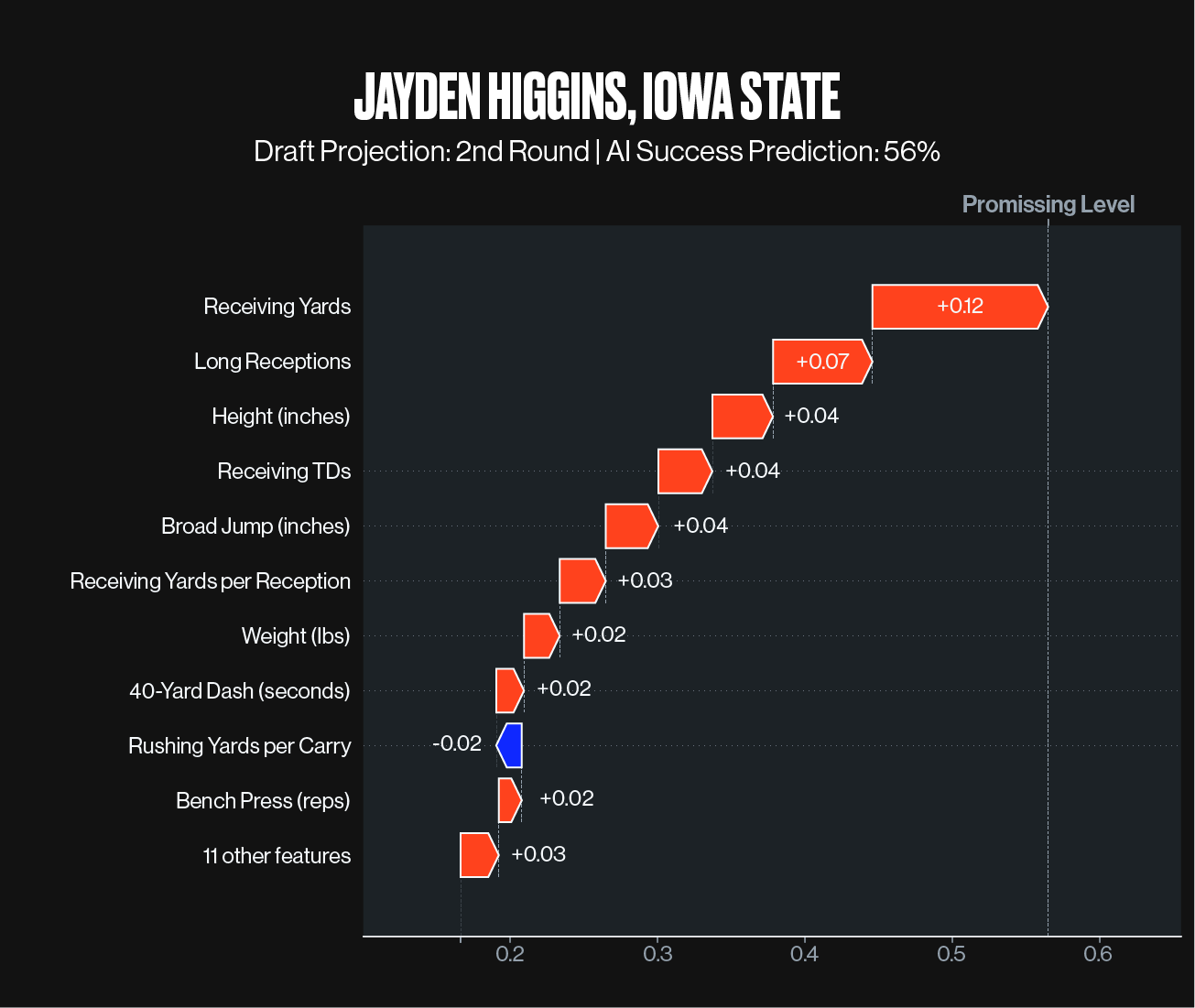
Our model’s top-rated wideout, Higgins checks every box—974 average receiving yards, 8.3 touchdowns per season, and elite combine numbers (128” broad jump). His size (6’4”, 214 lbs) and explosiveness are ideal.
Elic Ayomanor, Stanford
Draft Projection: 2nd Round | AI Success Prediction: 50%
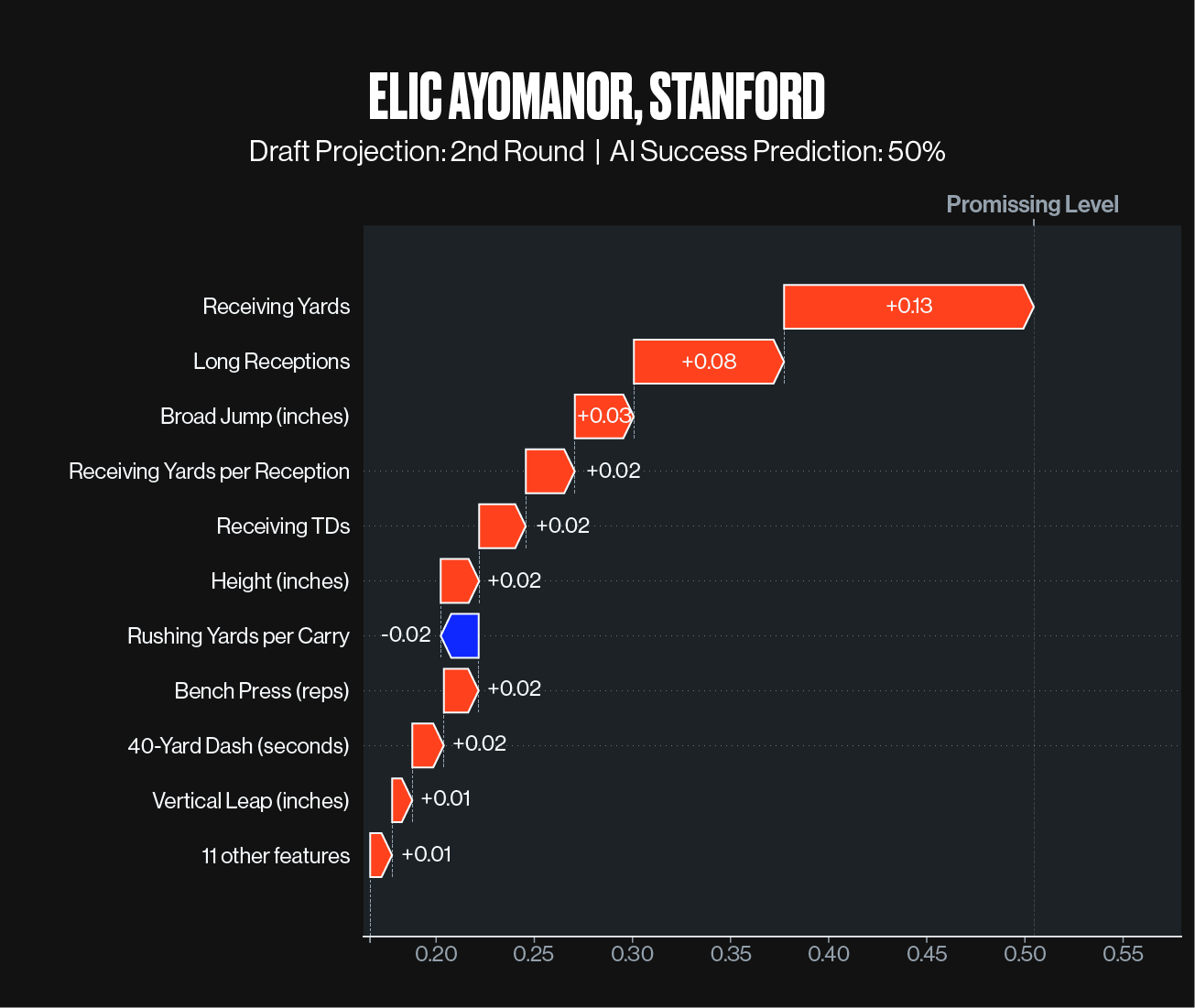
Ayomanor’s historic 294-yard game vs. Colorado made headlines, but our model likes his full body of work—long receptions, elite broad jump (127”), and a sturdy frame. He’s a well-rounded prospect with serious potential.
Conclusion: Rethinking the Draft
There are no guarantees in the NFL Draft. But objective analysis rooted in data can help cut through the noise and surface valuable insights—especially when it comes to later-round or overlooked talent.
From Cam Skattebo’s top-tier projection to Dillon Gabriel’s surprising upside and Seth Henigan’s potential “Mr. Irrelevant” story arc, AI gives us a unique lens into which players have the underlying traits of future NFL contributors.
As franchises look for every edge, we believe the smart use of historical data, contextualized AI modeling, and player profiling can be the difference between a draft-day win or a missed opportunity.

